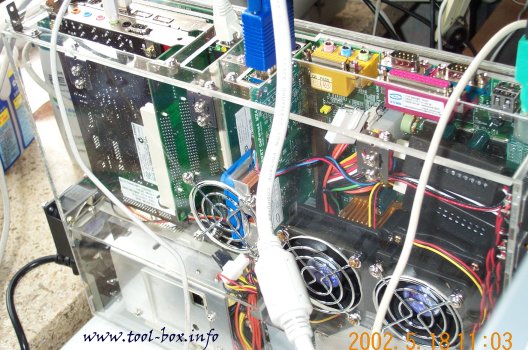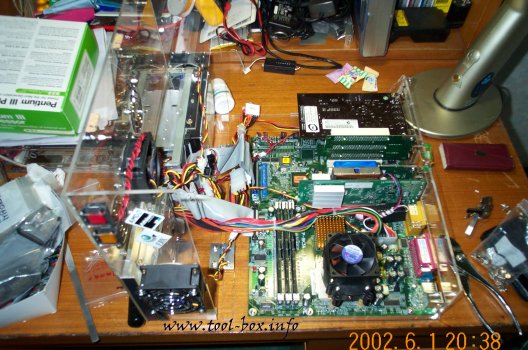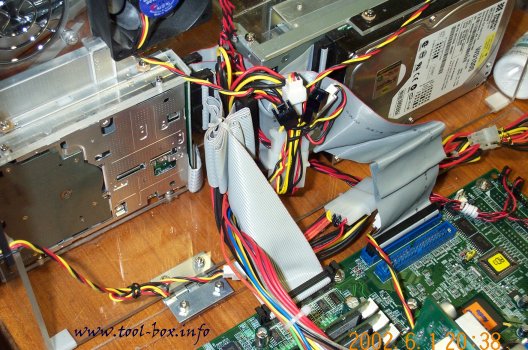The Second Portable Athlon (5/10)
Posted by Wesley on
Immediately noticeable of this case is the multitude of fan holes on it. There are five in total, with three at the side and one on the front and back, each. All are cut for 60mm fans. The rear fan supplies air to the power supply. I've taken out all the fans that were on the power supply because they were 40mm ones, which aren't so powerful yet noisy. The three holes on the side are for the video card, northbridge chipset, and CPU, in the order of left to right. The video card has a fan directly on the heatsink right now, but should the heatsink change later on and it won't hold a fan on it, I can simply attach one on the case. All fans operate at 5V to ensure silent operation of the system. I used four 25mm thick 60mm fans from Zalman Tech for all fan holes except that of the video card to maximize air flow rate while keeping the noise down to minimum. This is possible because they are the same fans used on the CNPS5100-Cu cooler. I'd like to thank Zalman Tech for providing quality components for this project.

Let's see the inside of the case this time. To simplify the maintenance of the system, I used two hinges originally used in the TabletXP project so that the case would open and close like a book. You may have seen similar design in a few computer cases. Come to think of it, it's ironic or fortunate that most of the failed project's components found its way to usefulness; now the microATX mainboard used in that project is the only thing left out.. big apologies go to Ronald Hanaki of Tech-Report who provided it for me. You can see that the power supply's cable is just sufficient enough to reach the mainboard even in the open configuration. While the position of the power connector on the mainboard may be less than optimal for normal cases, it is quite appropriate for this case.

Due to the way the components are positioned, practically all wires converge at the middle of the case. This isn't particularly good because, as it is shown in the picture, it gets a bit thick and can hinder a proper closing of the case. I've eventually sorted the wires out later on. Another thing to note is how the drives are positioned. The slim size CD-ROM drive and the floppy drive are attached on the side panel of the case, while the hard disk drive is attached right below the power supply. Because power supply components generate electromagnetic fields, and hard disk's storage method is also electromagnetic in nature, this configuration can be frowned upon. However, I could not find any better place to put the hard disk on, because the hard disk is actually quite big (the 3.5" hard disk drive is actually the second biggest component in this project, volume-wise; I almost contemplated a 2.5" hard disk used in laptops) and there isn't a room in such a compact case. That spot was the only viable location. Fortunately, I have not encountered a single problem in hard disk operation despite such unorthodox positioning.